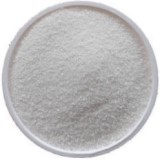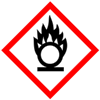Potassium Nitrite SDS MSDS of Manufacturers & Exporters
Please visit Potassium Nitrite USP NF ACS BP Ph Eur EP JP IP Analytical reagent FCC Food grade Manufacturers our associates world class FDA-GMP approved, ISO-9001 Certified facility Anmol Chemicals

Potassium Nitrite CAS Number 7758-09-0
Potassium Nitrite SDS, Safety Data Sheet
MSDS Sheet, Material Safety Data Sheet 08-Aug-22
1. Product Identification
Product Name & Other Names: Potassium nitrite or Nitrous acid, potassium salt.
CAS No.: 7758-09-0
EINECS EC No.: 231-832-4
Molecular Weight: 85.1
Chemical Formula: KNO2
Relevant uses and uses advised against (if any): Industrial Manufacturing.
Suppliers: As per letterhead.
2. Hazards Identification
GHS, Globally Harmonized System Classification in accordance with 29 CFR 1910
Classification according to Regulation (EC) No 1272/2008
Oxidizing liquids; Oxidizing solids Category 2 - H272
Acute toxicity, oral Category 3 - H301
Hazardous to the aquatic environment, acute hazard Category 1 - H400
Labeling according to GHS & Regulation (EC) No 1272/2008
GHS Label Elements

Oxidizing Solid |
GHS Label Elements

Toxic |
GHS Label Elements

Marine Pollutant |
Signal Words: Danger
Hazard statements:
H272: May intensify fire; oxidizer.
H301: Toxic if swallowed.
H400 Very toxic to aquatic life.
Precautionary statements:
P210: Keep away from heat/sparks/open flames/hot surfaces – No smoking.
P220: Keep/Store away from clothing/---/combustible materials.
P221: Take any precaution to avoid mixing with combustibles.
P264: Wash --- thoroughly after handling.
P270: Do not eat, drink, or smoke when using this product.
P273: Avoid release to the environment.
P280: Wear protective gloves/protective clothing/eye protection/face protection.
P330: Rinse mouth.
P370+378: In case of fire: Use water spray, alcohol-resistant foam, dry chemical, or carbon dioxide for extinction.
P301+310: IF SWALLOWED: Immediately call a POISON CENTER or doctor/physician.
3. Composition/Information on Ingredients
Product Name & Other Names: Potassium nitrite or Nitrous acid, potassium salt.
CAS No.: 7758-09-0
Percent: 99 - 100%
4. First Aid Measures
Always get medical attention after the first aid is over.
Inhalation: If Potassium Nitrite is inhaled, remove to fresh air. If breathing is difficult, give oxygen. Get medical attention.
Ingestion: Do not induce vomiting unless directed to do so by medical personnel. Never give anything by mouth to an unconscious person. If large quantities of this material are swallowed, call a physician immediately. Loosen tight clothing. Get medical attention.
Skin Contact: Immediately flush skin with plenty of water for at least 15 minutes while removing contaminated clothing and shoes. Get medical attention. Wash clothing before reuse. Thoroughly clean shoes before reuse.
Eye Contact: Check for and remove any contact lenses. In case of contact, immediately flush eyes with plenty of water for at least 15 minutes. Get medical attention.
5. Fire Fighting Measures
Fire: Not combustible, but substance is a strong oxidizer and its heat of reaction with reducing agents or combustibles may cause ignition.
Explosion: Some Nitrites may explode when shocked, exposed to heat or flame, or by spontaneous chemical reaction. Sealed containers may rupture when heated. Sensitive to mechanical impact.
Fire Extinguishing Media: Dry chemical, carbon dioxide, Halo, water spray, or fog. If water is used, apply from as far a distance as possible. Water spray may be used to keep fire exposed containers cool. Do not allow water runoff to enter sewers or waterways. Use flooding quantities of water as spray. Cool containers with flooding quantities of water until well after fire is out.
Extinguishing Media Not recommended: None specified.
Special Information: In the event of a fire, wear full protective clothing and NIOSH-approved self-contained breathing apparatus with full face piece operated in the pressure demand or other positive pressure mode. At high temperatures under fire conditions, it may produce toxic or irritating fumes. Fire-extinguishing work is done from the windward and the suitable fire-extinguishing method according to the surrounding situation is used.
6. Accidental Release Measures
Personal precautions, protective equipment, and emergency procedures: Avoid breathing dust/fumes/gas/mist/vapors/spray. Use individual protective equipment (waterproof boots, suitable protective clothing, safety glasses, etc.). Do not approach facing the wind.
Environmental precautions: Do not let the product enter drains, soil, or water sources.
Methods and materials used for containment cleanup procedures and Storage: Oxidizing material. Contain spilled material. Do not let the product enter drains. Use a shovel to put the material into a convenient waste disposal container.
7. Handling and Storage
Precautions for safe handling: Apply according to good manufacturing and industrial hygiene practices. Ensure proper ventilation. In case of insufficient ventilation, wear suitable respiratory equipment. Wash thoroughly after handling. Do not drink, eat, or smoke while handling. Avoid contact with skin, eyes, and clothing. Minimize dust generation. Avoid breathing dust/fumes/gas/mist/vapors/spray. Keep container tightly closed. Avoid ingestion and inhalation. Use individual protective equipment (waterproof boots, suitable protective clothing, safety glasses, etc.).
Conditions for safe storage, including any incompatibilities: Store in cool, dry, and ventilated area away from heat sources and protected from sunlight in tightly closed original container. Keep air contact to a minimum. Store protected from heat, sparks and ignition sources and incompatible materials. Avoid contact with skin and eyes. Avoid inhalation of dust/mist/vapor. Do not store with incompatible materials like strong oxidizing agents, acids, aluminum, amines, chlorates, finely powdered metals, hydrazine, permanganates, boron, amides, hypophosphites, sulfites, carbon, ammonium salts, iodides, mercury salts, cyanides. Protect against physical damage and moisture. Isolate from any source of heat or ignition. Avoid storage on wood floors. Separate from incompatibles, combustibles, organic or other readily oxidizable materials. Keep away from sources of ignition - No smoking. Keep away from heat and sources of ignition.
8. Exposure Controls/Personal Protection
Airborne Exposure Limits: None established.
Ventilation System: A system of local and/or general exhaust is recommended to keep employee exposures as low as possible.
Personal Respirators (NIOSH Approved): For conditions of use where exposure to dust or mist is apparent and engineering controls are not feasible, a particulate respirator (NIOSH type N95 or better filters) may be worn.
Skin Protection: Wear impervious protective clothing, including boots, gloves, lab coat, apron, or coveralls, as appropriate, to prevent skin contact.
Eye Protection: Use chemical safety goggles and/or full-face shield where dusting or splashing of solutions is possible. Maintain eye wash fountain and quick-drench facilities in work area.
Other Control Measures: Maintain good housekeeping in work area. Handle in accordance with good industrial hygiene and safety practice. Wash hands after handling.
9. Physical and Chemical Properties
Appearance: White to yellowish crystals.
Odor: Odorless.
Odor threshold: Not available.
pH: 7 - 10
Relative density: around 1.9
Boiling Point: >350C Decomposes
Melting Point: >350C Decomposes
Flash point: Not available.
Auto-ignition temperature: No information found.
Decomposition temperature: No information found.
Upper/lower flammability or explosive limits: No information found.
Vapor Pressure (mm Hg): Negligible @ 20C
Vapor density: No information found.
Evaporation rate: No information found.
Flammability (solid, gas): No information found.
Partition coefficient: n-octanol/water: No information found.
Solubility: Soluble in water
Viscosity: No information found.
Molecular Weight: 85.1
Molecular Formula: KNO2
10. Stability and Reactivity
Stability: Stable under ordinary conditions of use and storage. It is hygroscopic.
Hazardous Decomposition Products: Oxides of nitrogen and toxic metal fumes may form when heated to decomposition.
Hazardous Polymerization: Will not occur.
Incompatibilities: Acids, aluminum, amines, chlorates, finely powdered metals, hydrazine, permanganates, boron, amides, hypophosphites, sulfites, carbon, ammonium salts, iodides, mercury salts, cyanides. Avoid all strong reducing agents, powdered metals, strong acids.
Conditions to Avoid: Heat, flames, organic materials, ignition sources and incompatibles.
11. Toxicological Information
Inhalation, mouse: LC50 = 85 gm/m3/2H;
Oral, rabbit: LD50 = 200 mg/kg.
Carcinogenicity: No component of this product present at levels greater than or equal to 0.1% is identified as possible or confirmed human carcinogen by IARC, ACGIH, OSHA and NTP.
Teratogenic Effects: No information found.
Mutagenic Effects: No information found.
Developmental Toxicity: No information found.
Reproductive Effects: No information found.
12. Ecological Information
Toxicity to fish LC50: Danio rerio (zebra fish) - 620 mg/l - 96.0 h
Toxicity to daphnia and other aquatic invertebrates: EC50 - Daphnia magna (Water flea) - 215 mg/l - 48 h
Environmental Toxicity: Very toxic to aquatic organisms.
Persistence and Degradability: Unlikely to persist due to water solubility.
Mobility: Likely to be mobile due to water solubility.
Bioaccumulation/ Accumulation: No information found.
Results of PBT and vPvB assessment: No information found.
13. Disposal Considerations
Whatever cannot be saved for recovery or recycling should be handled as hazardous waste and sent to an approved waste facility.
14. Transport Information
Land Transport DOT USA, TDG Canada & ADR/RID Europe:
Proper Shipping Name: POTASSIUM NITRITE
Hazard Class: 5.1 Oxidizing material; Packing Group: III
UN/NA: UN1488
Sea Transport IMDG/IMO:
Proper Shipping Name: POTASSIUM NITRITE
Hazard Class: 5.1 Oxidizing material; Packing Group: III
UN/NA: UN1488
Air Transport IATA/ICAO:
Proper Shipping Name: POTASSIUM NITRITE
Hazard Class: 5.1 Oxidizing material; Packing Group: III
UN/NA: UN1488
15. Regulatory Information
USA:
SARA 311/312: Acute: and chronic health hazard.
California Prop 65: Not listed.
16. Other Information
DISCLAIMER: The information and recommendations set forth herein are presented in good faith and believed correct as of the date hereof. It is compiled from various sources, and it is not necessarily all inclusive nor fully adequate in every circumstance. In addition, these suggestions should not be confused with nor followed in violation of applicable laws, regulations, rules, or insurance requirements applicable. This SDS MSDS sheet is intended only as a guide to the appropriate precautionary handling of the material by a professionally trained person using this product. Individuals receiving the information must exercise their independent judgment in determining its appropriateness for a particular purpose. This shall not constitute a guarantee for any specific product features and shall not establish a legally valid contractual relationship. In no case shall our company be liable to loss or damages by the product user. Specifications of Potassium Nitrite BP Ph Eur EP JP USP NF IP ACS Analytical Reagent FCC Food grade Manufacturers |








